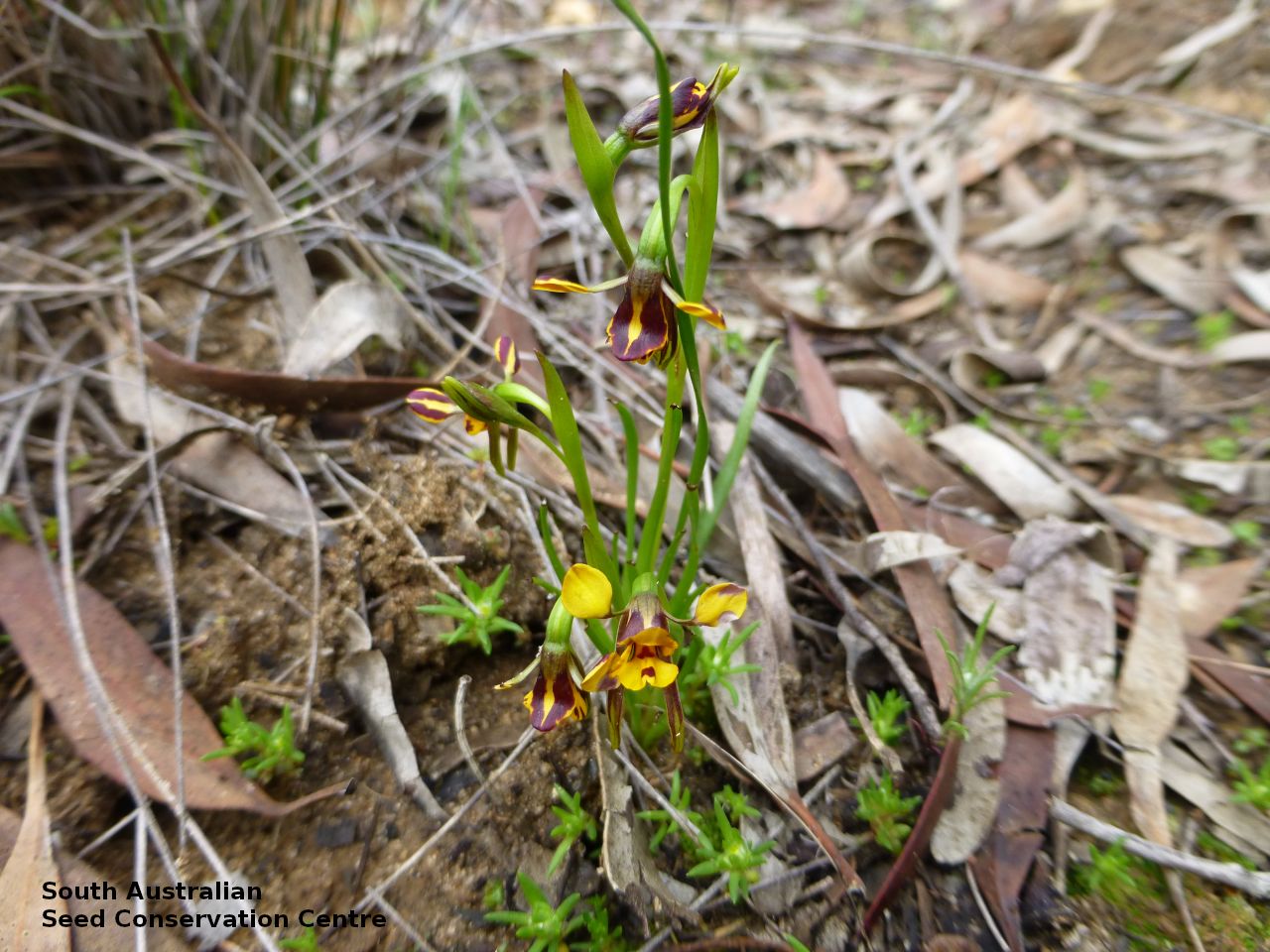
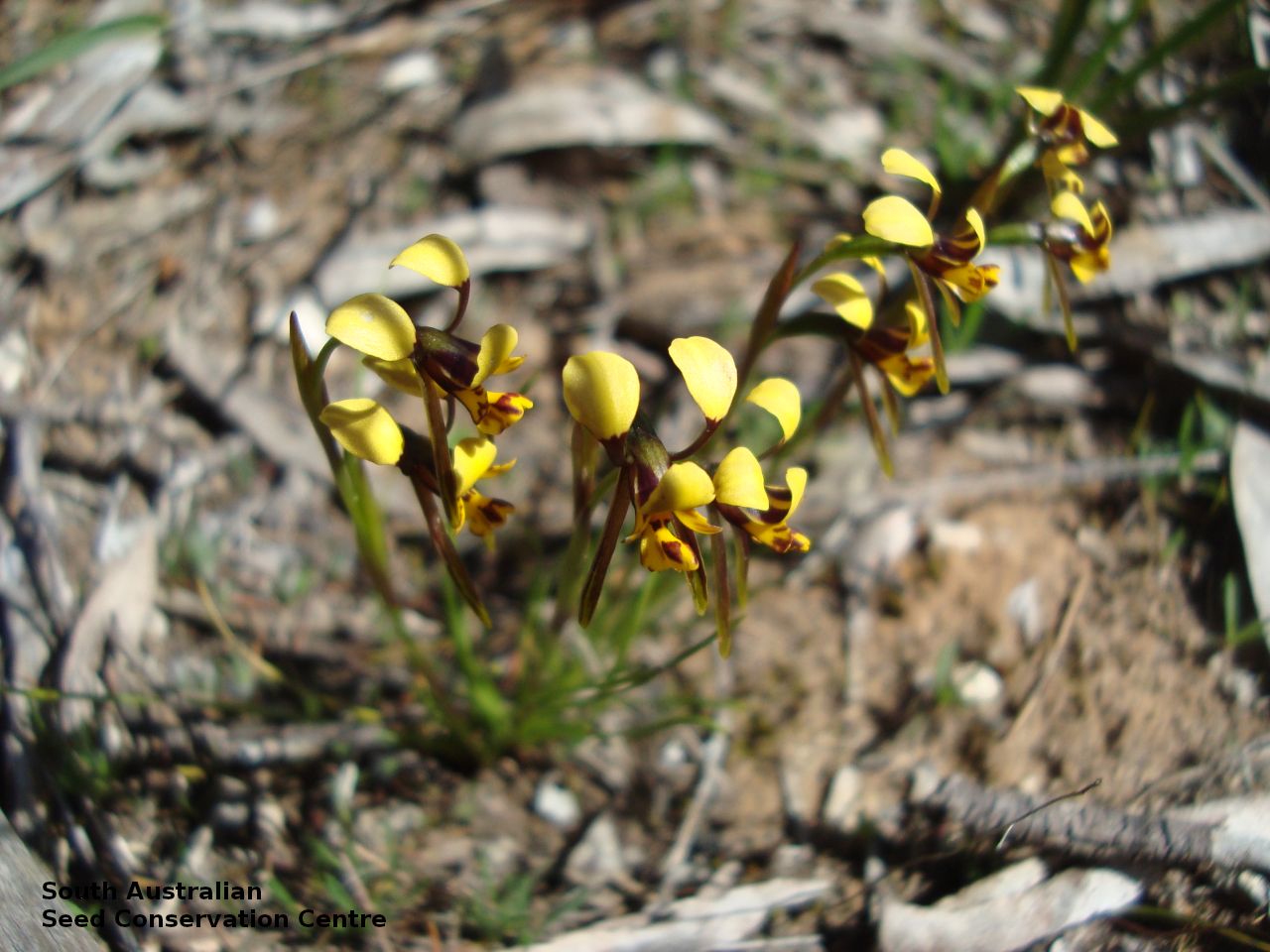
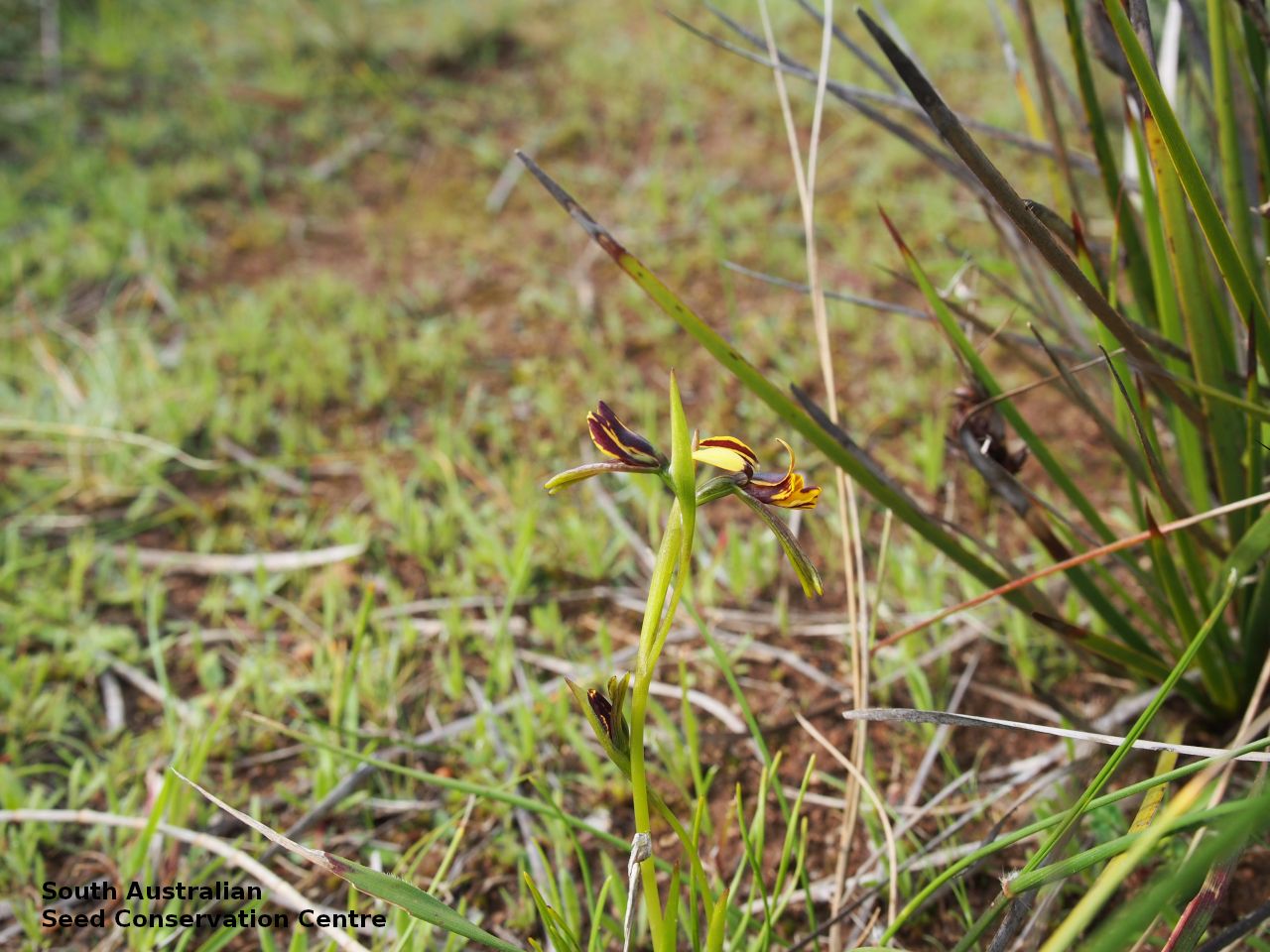
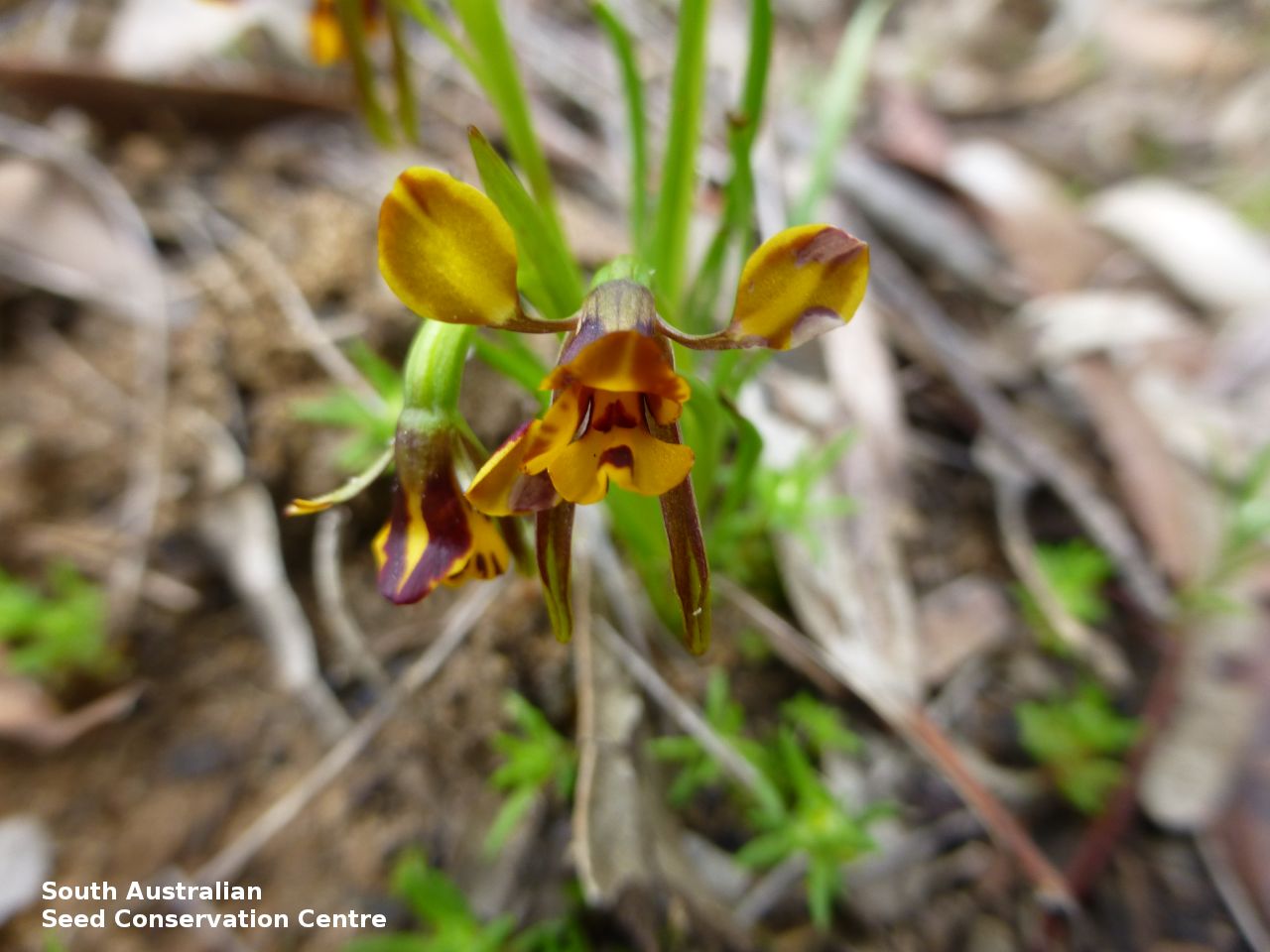
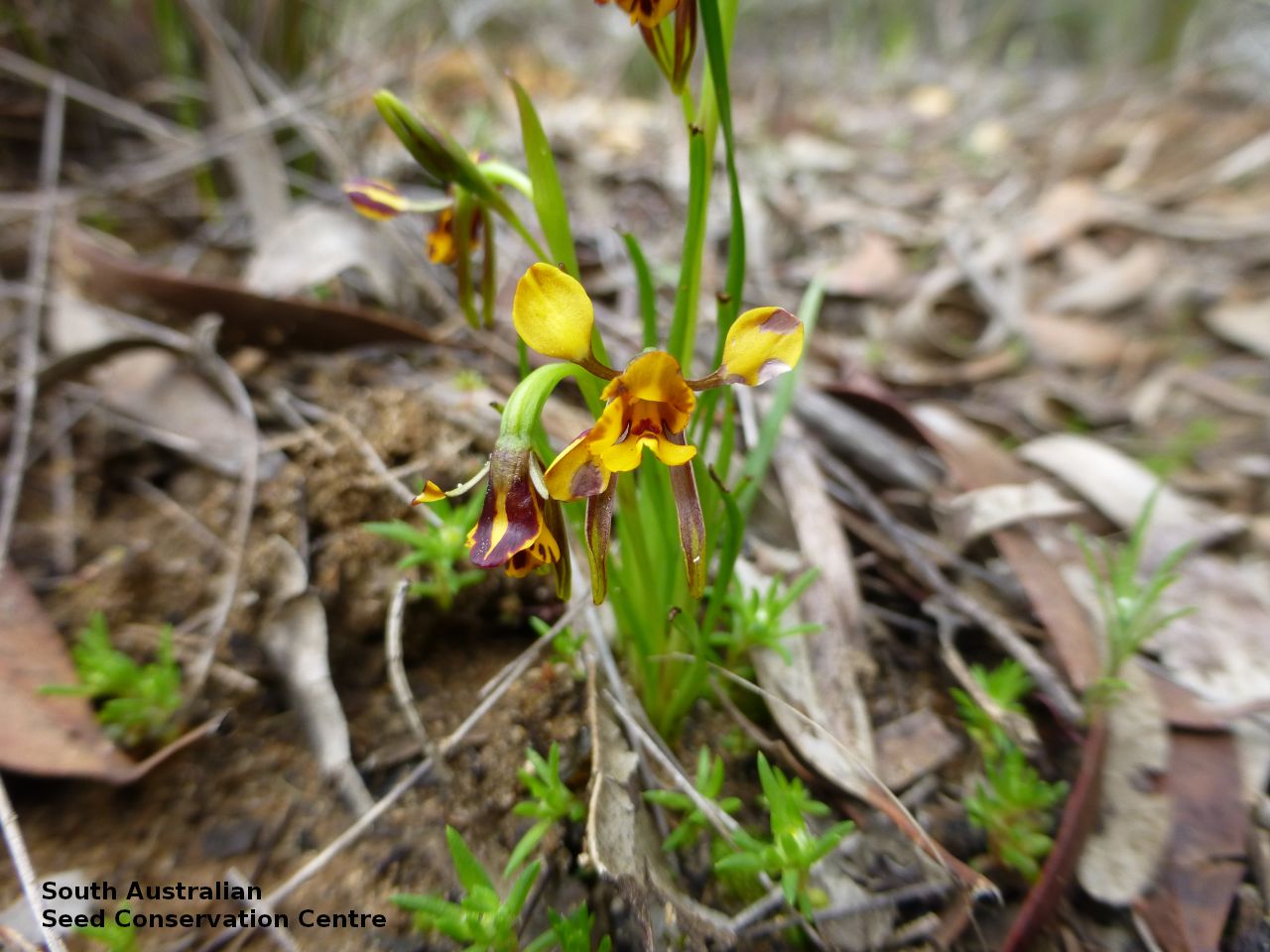
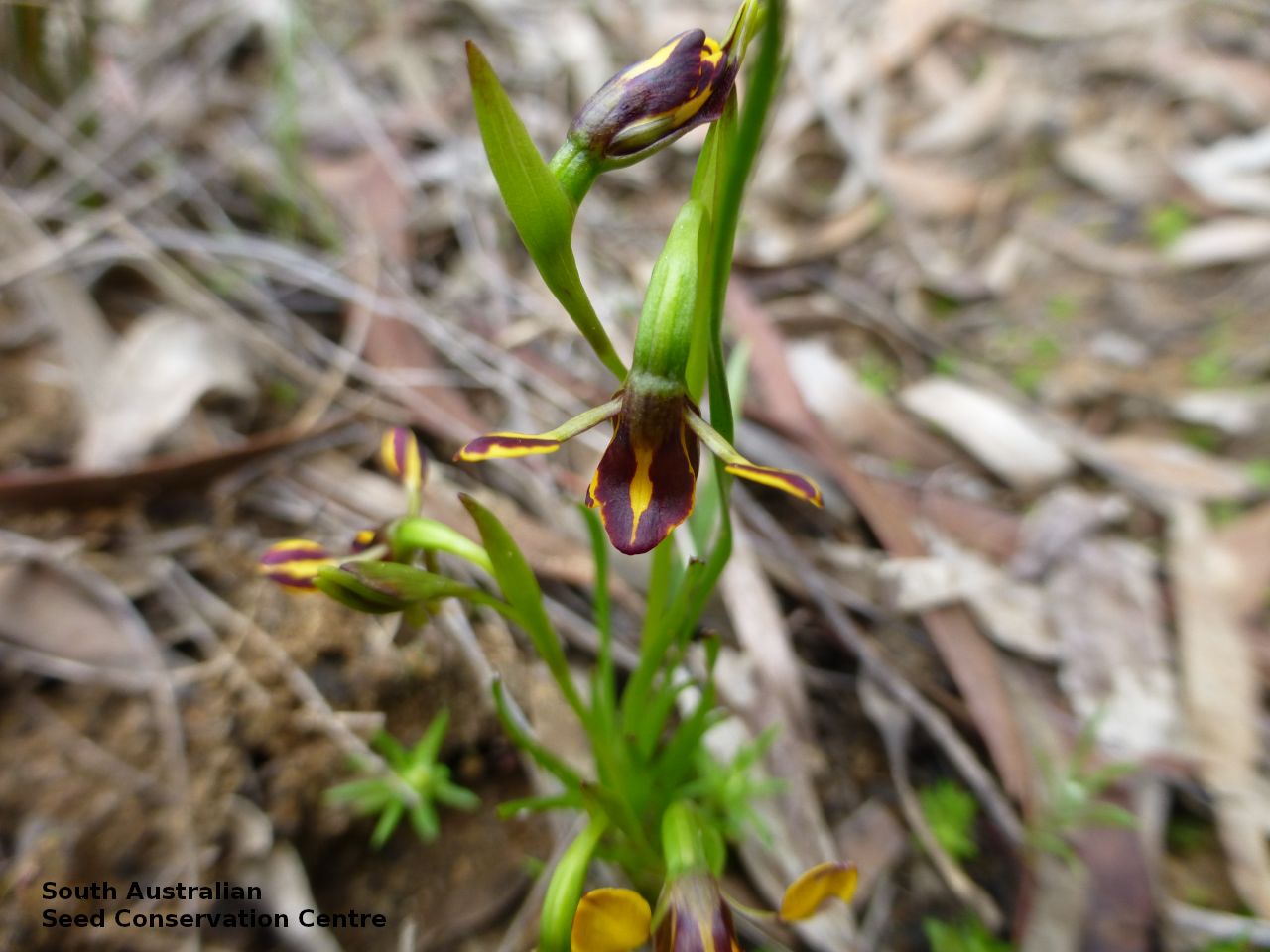
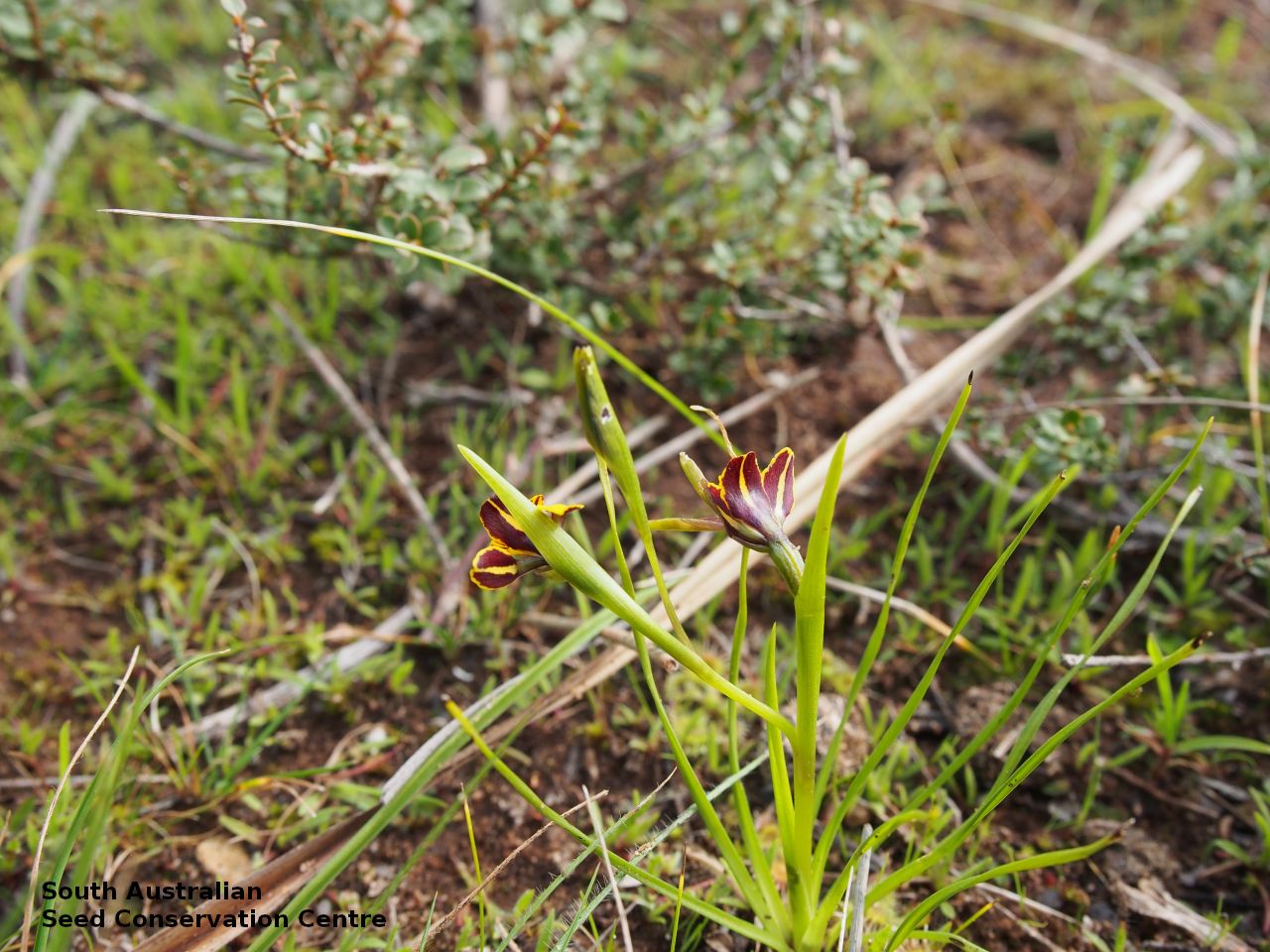
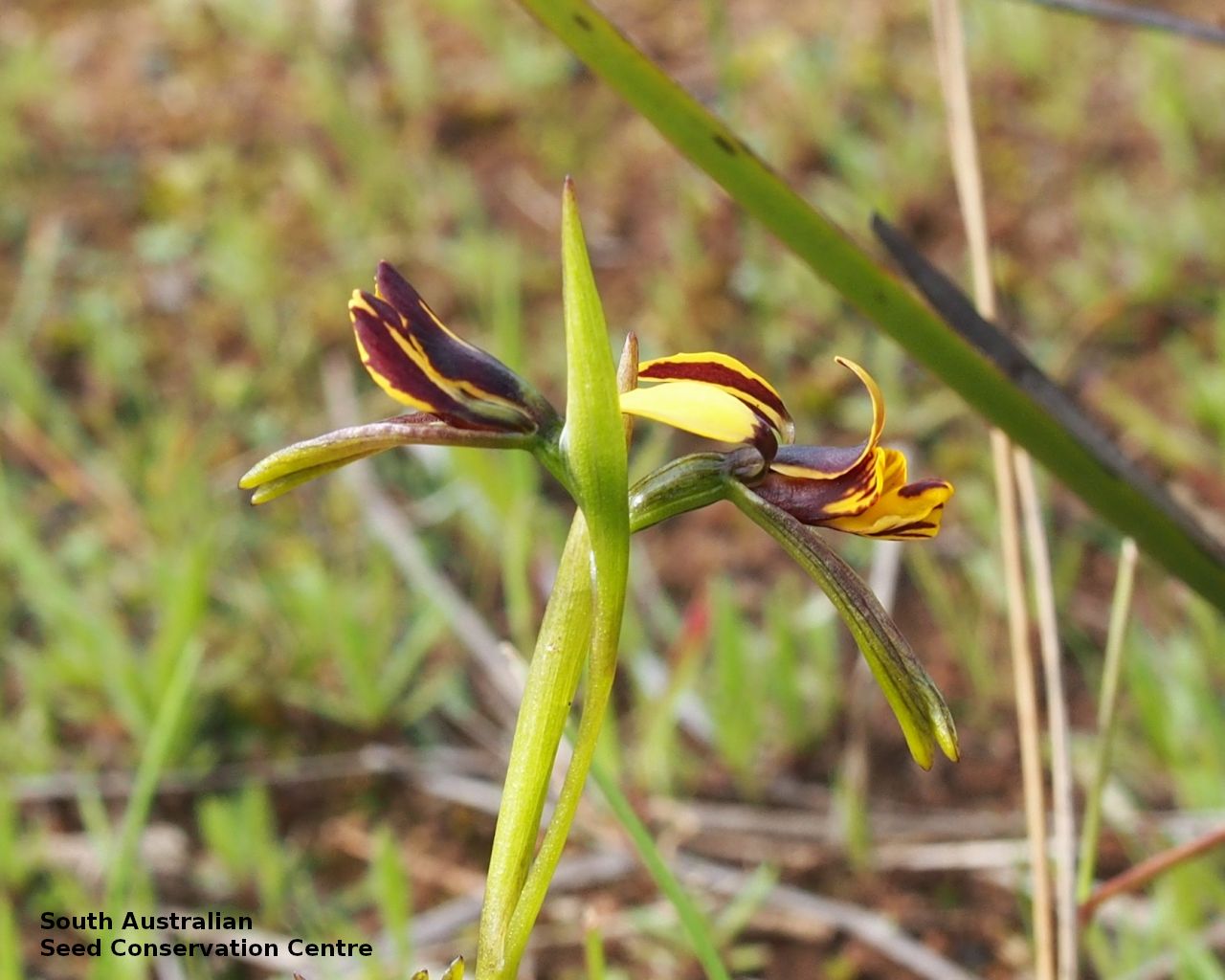
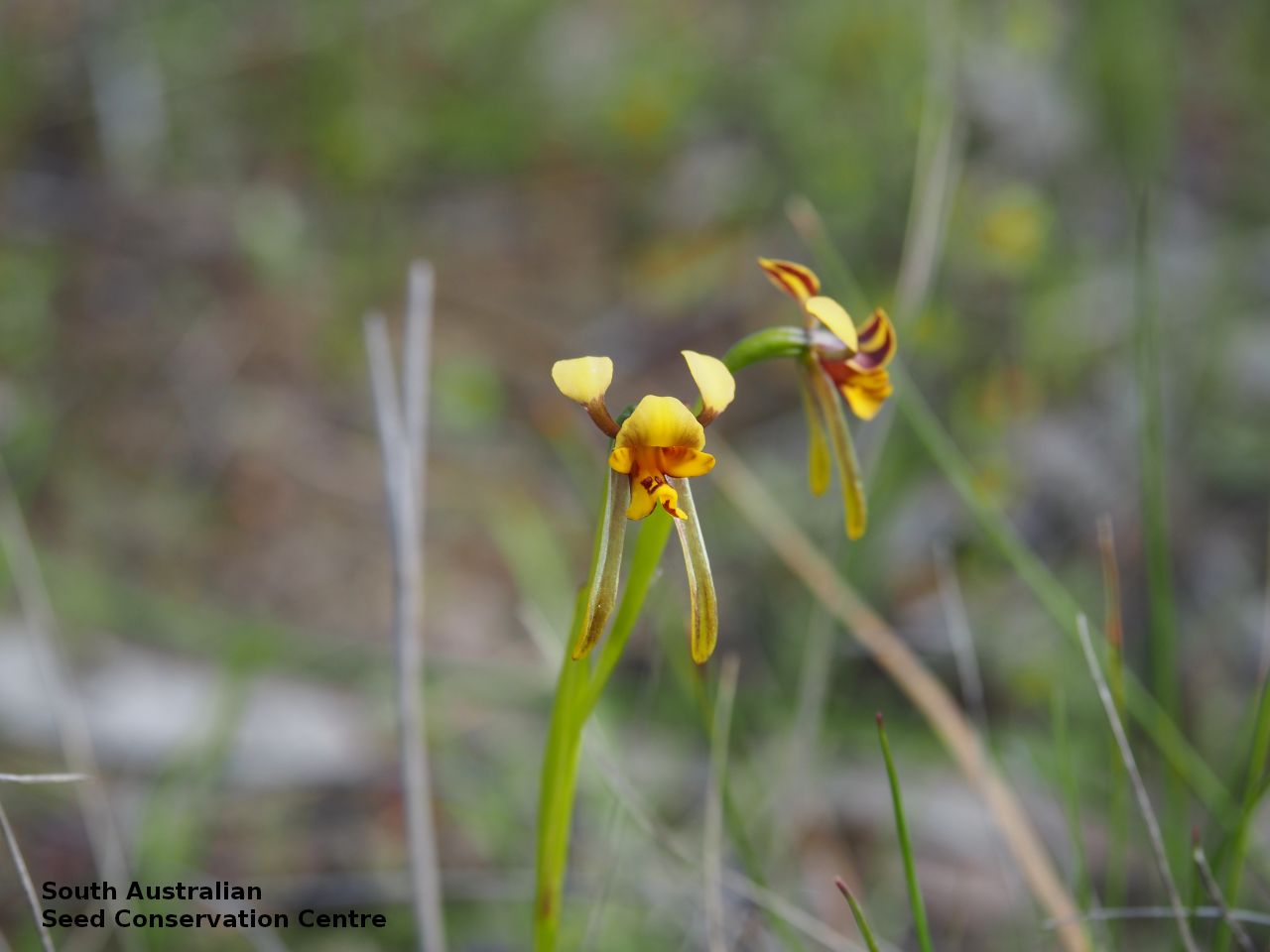
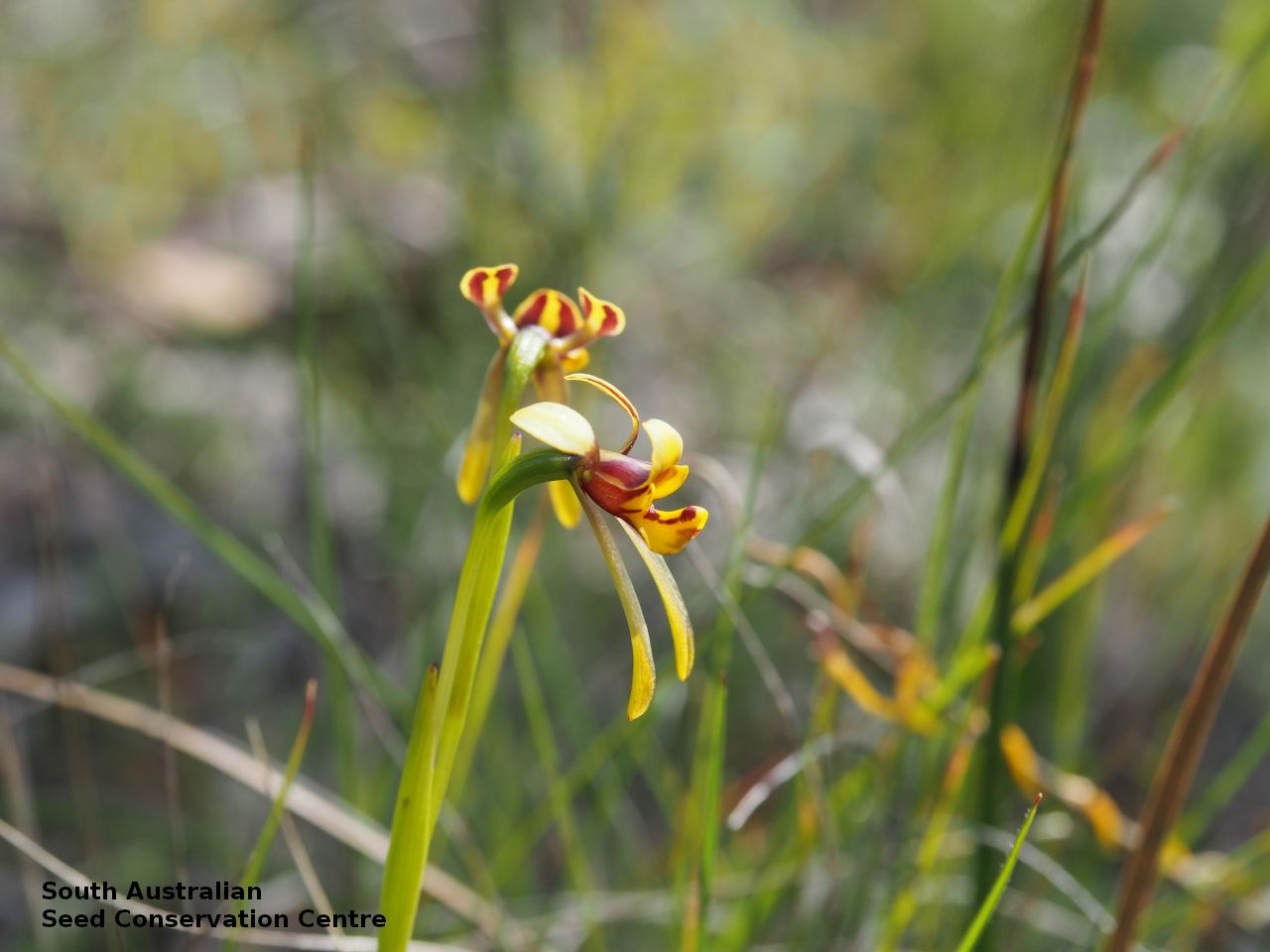
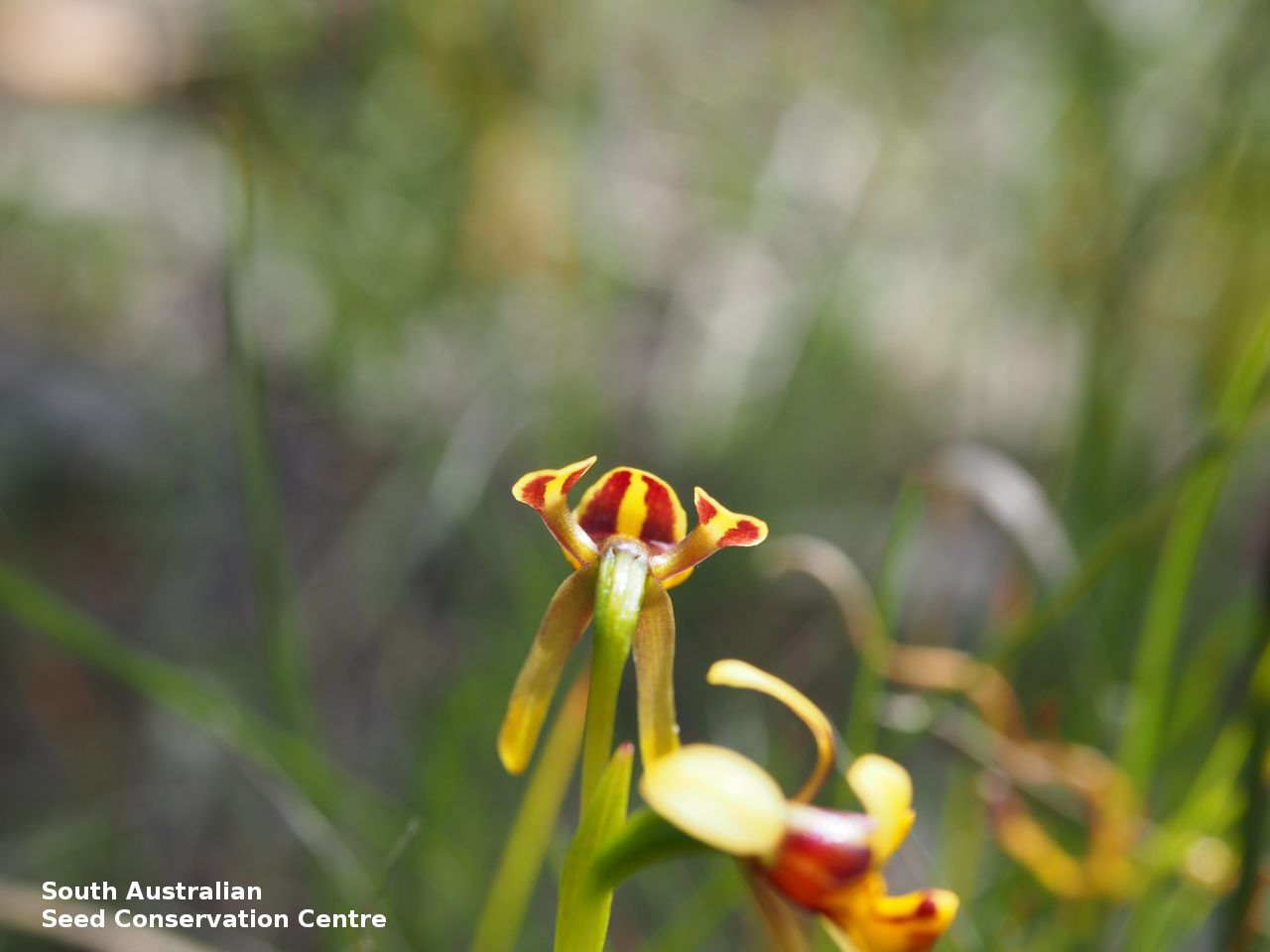
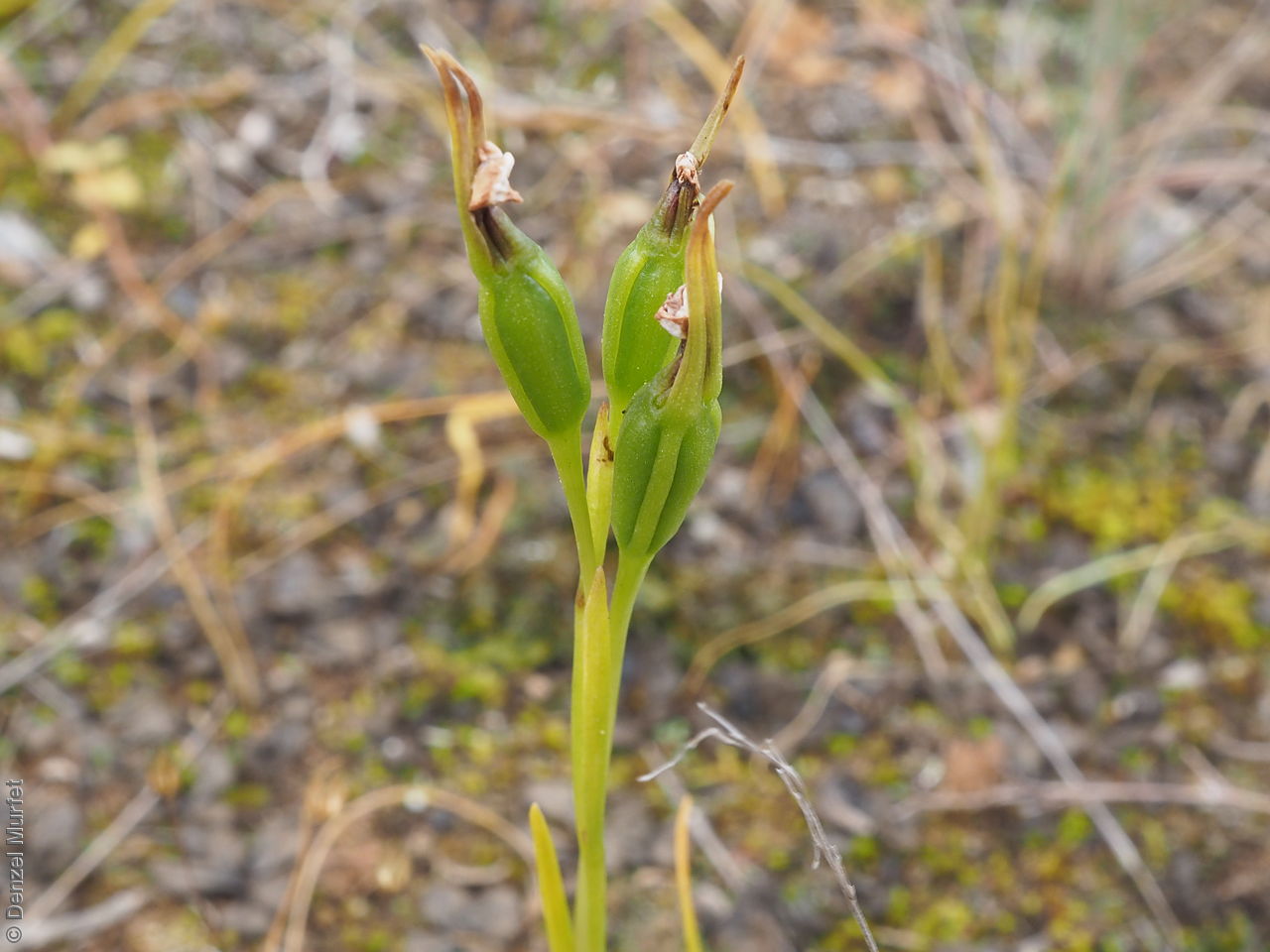
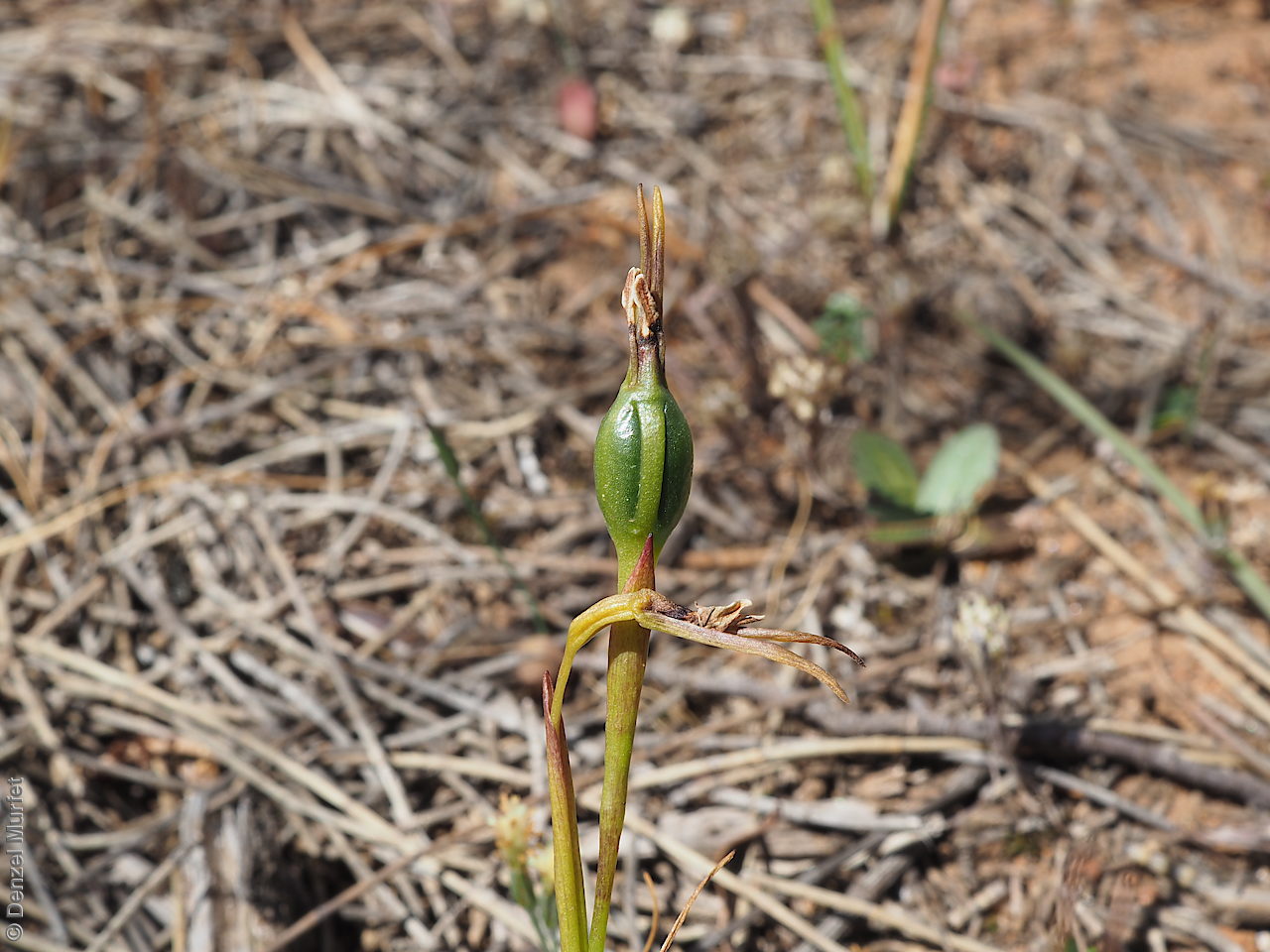
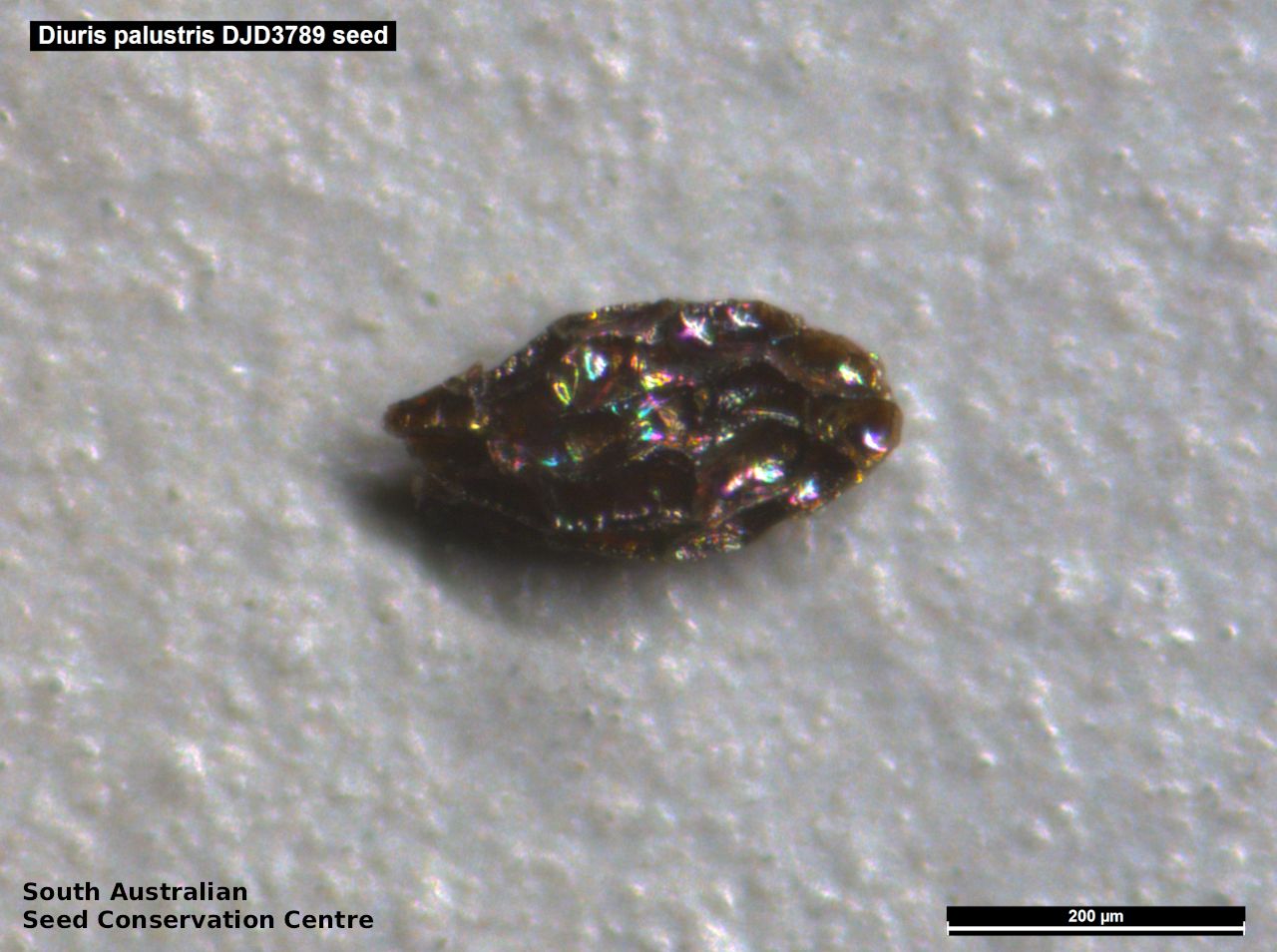
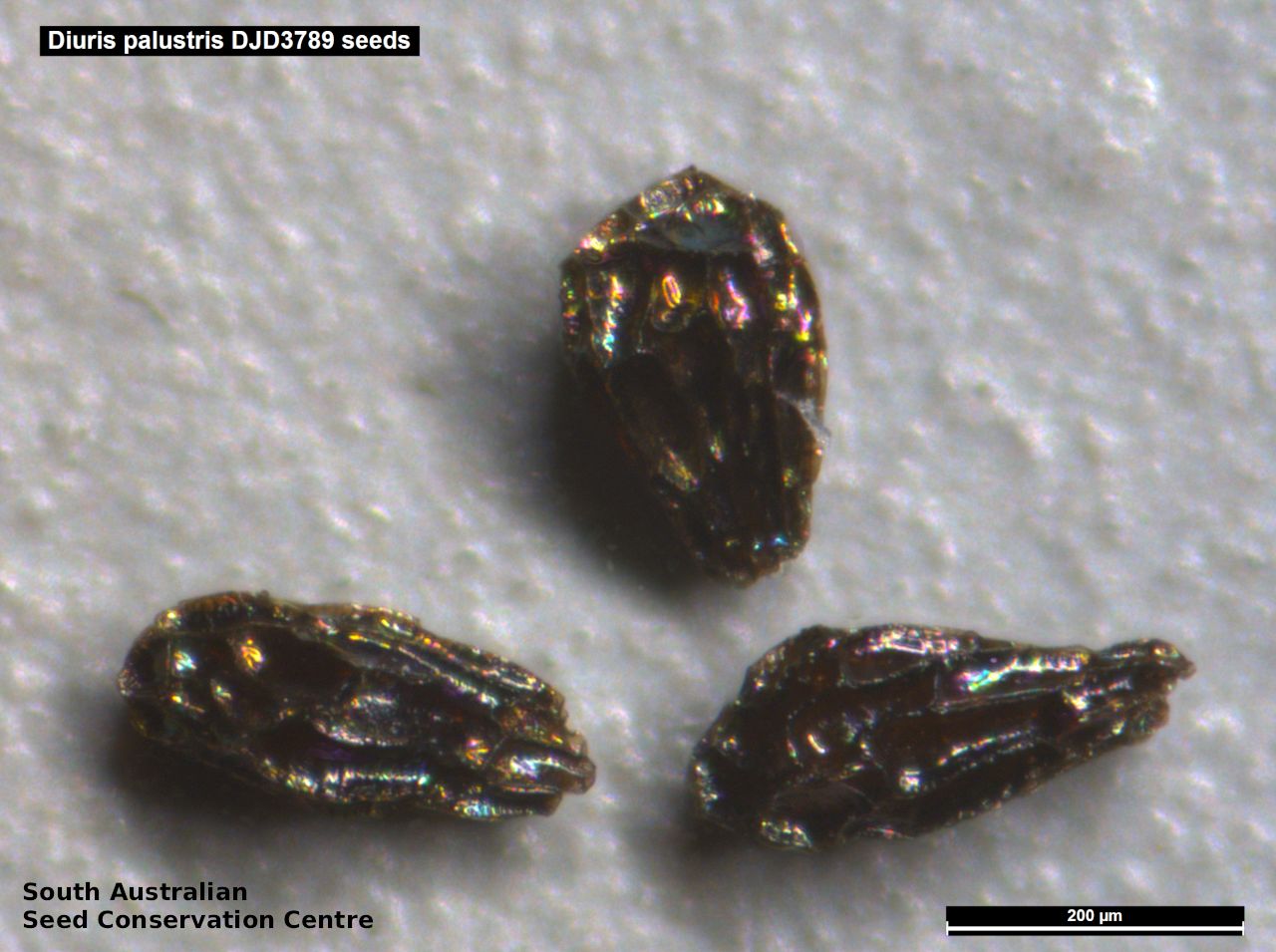

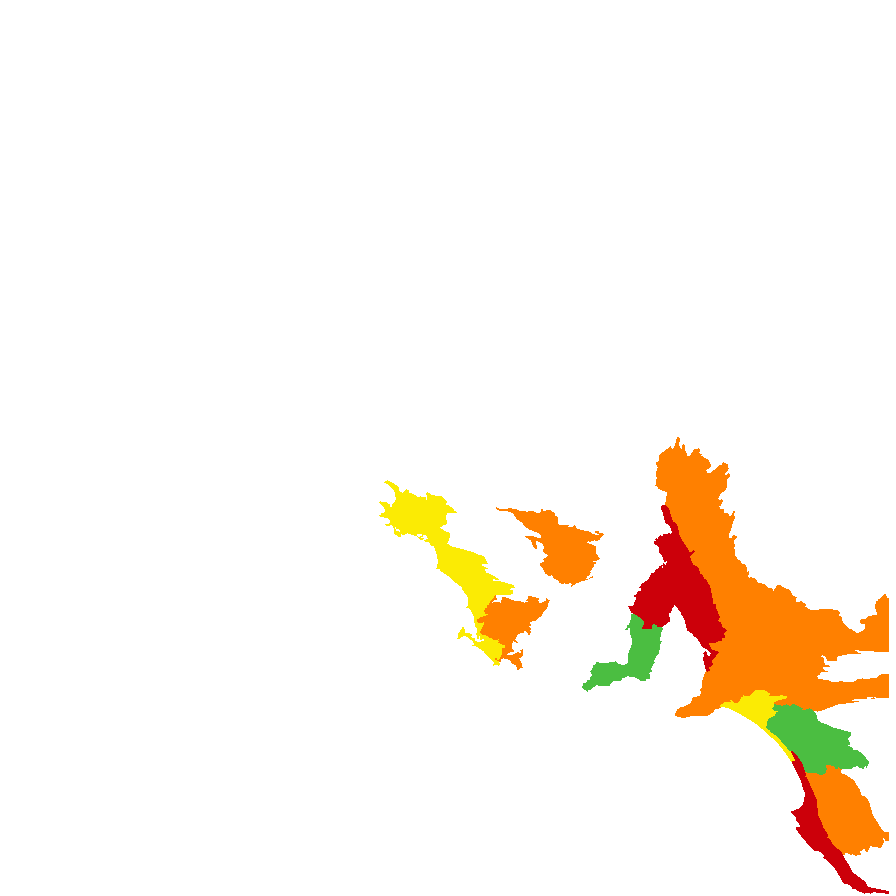
Botanical art
Common names
Cinnamon Donkey-orchid
Little Donkey-orchid
Etymology
Diuris from the Greek 'dis' meaning two and 'oura' meaning a tail, referring to the drooping lateral sepals resembling tails, on some species. Palustris from the Latin 'palustre' meaning swampy; referring to the habitat where the species was first found but not in this habitat in South Australia.
Distribution and status
Found from about Quorn to the South-east in South Australia, growing in moist depressions in grassland, open forest or heathland. Also found in Victoria and Tasmania. Native. Uncommon in South Australia. Rare in Victoria. Uncommon in Tasmania.
Herbarium regions: Flinders Ranges, Eyre Peninsula, Northern Lofty, Murray, Yorke Peninsula, Southern Lofty, South Eastern, Green Adelaide
NRM regions: Adelaide and Mount Lofty Ranges, Eyre Peninsula, Northern and Yorke, South Australian Arid Lands, South Australian Murray-Darling Basin, South East
AVH map: SA distribution map (external link)
Plant description
Terrestrial orchid to 15 cm tall in flower. Leaves 3-10, slender, linear, erect and twisted, to 10 cm long, in a loose tussock. Inflorescence at the end of brownish green stem to 15 cm long with 1-4, yellow flowers (with brown spots, blotches and striping, especially on the outer surfaces, or wholly yellow). Top sepal rounded, erect with a recurved tip. Lateral sepals brown or green, linear, down-swept, to 20 mm long. Petals erect and reflexed, on long purple-brown claws; the lamina oval to 8 mm long, yellow inside with two dark brown vertical stripes outside. Labellum relatively small, to 1 cm; deeply 3-lobed, side lobes narrow, as long as the folded, spade shaped mid-lobe, peaked at the apex. Flowers nutmeg scented. Flowering between August and October. Fruits are brown papery ellipsoid capsule.
Seed collection and propagation
Collect seeds between November and January. Collect fat capsules as they start to dry and turn brown. Pods will split and release the seeds quickly and will require monitoring. To increase the chances of collecting mature pods, it is recommended that a small breathable bag (ie. Organza bags) be used to enclose the developing capsules. Place the capsules in a container that will hold fine seeds and leave to dry for a few weeks or until the capsule split. Then carefully hold the capsule and tap it gently to release the seeds. Store the seeds with a desiccant such as dried silica beads or dry rice, in an air tight container in a cool and dry place, refrigerator or in liquid nitrogen.
| Location | No. of seeds (weight grams) | Number of plants | Date collected | Collection number Collection location | Date stored | % Viability | Storage temperature |
|---|---|---|---|---|---|---|---|
| BGA | 266,400 (0.24 g) | 30+ | 9-Oct-2018 | DJD3789 Murray | 24-Apr-2019 | N/C | -18°C, -80°C |
| BGA | 37,700 (0.035 g) | 3 | 9-Oct-2020 | J.J.Smith Southern Lofty | 28-Jun-2021 | N/C | -18°C |
Number of plants: This is the number of plants from which the seeds were collected.
Collection location: The Herbarium of South Australia's region name.
% Viability: Percentage of filled healthy seeds determined by a cut test or x-ray.